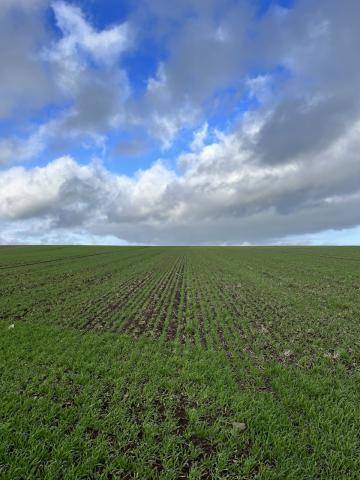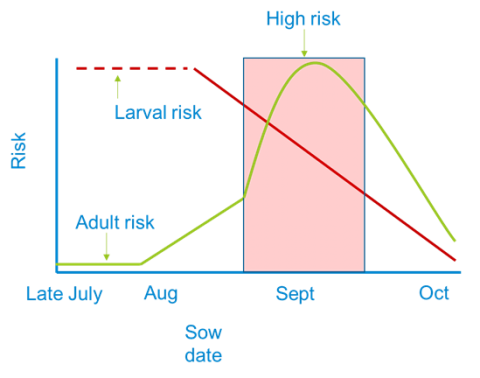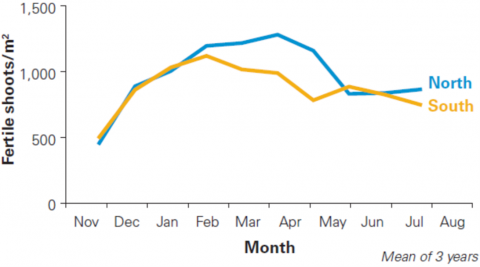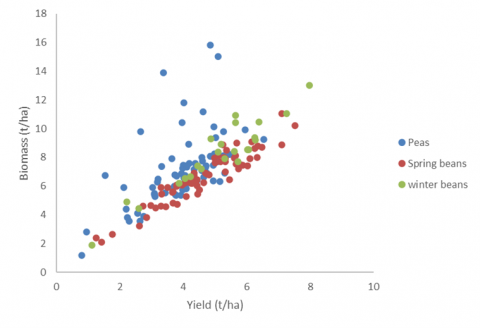Pete Berry

Maximum shoot number occurs around GS30/31 when competition for resources between the extending stem and developing tillers, means that the plant can no longer support the production of more tillers and some die off. For wheat the AHDB Growth Guide benchmark maximum shoot number is about 1000 shoots and typically about half of these die between GS30/31 and flowering (Figure 1). For winter barley, the benchmark maximum shoot number is about 1200 shoots/m2 and about one third die (Figure 2). Crops with lots of shoots at GS30 tend to lose a greater proportion of these with up to 70% dying in some crops. It is therefore vital to manage the crop to minimise shoot death.
Shoots die when there are insufficient resources to support their growth, with the latest formed tillers dying first. Shoot survival is maximised in sunny, cool conditions and when there are sufficient nutrients. Shoots dying due to lack of N are illustrated by the newest leaf turning pale, whereas the older leaves turn pale when shoots die due to lack of sulphur.
For wheat, about one third of the shoots that die do so after GS39, so it is vital to make sure that the crop is not lacking any nutrients and its performance is not hindered by disease during the late stem extension period. Losing late tillers has been shown to be a significant drain on the crop. This is because they compete with surviving shoots when alive then once they die their biomass is lost and not remobilise into the plant. Biomass lost in non-surviving shoots can be up to 3 t/ha. In contrast, most nitrogen in non-surviving shoots is redistributed to the surviving shoots. PGRs that inhibit gibberellic biosynthesis applied during early stem extension have been shown to increase shoot number, probably because they reduce apical dominance. However, effects on shoot number are often transient and it is likely that additional management, perhaps additional nutritional inputs, may be needed to maintain increases in the shoot number.

Figure 1. Winter wheat shoot production and survival (AHDB Wheat Growth Guide)

Figure 2. Winter barley shoot production and survival (AHDB Barley Growth Guide)

